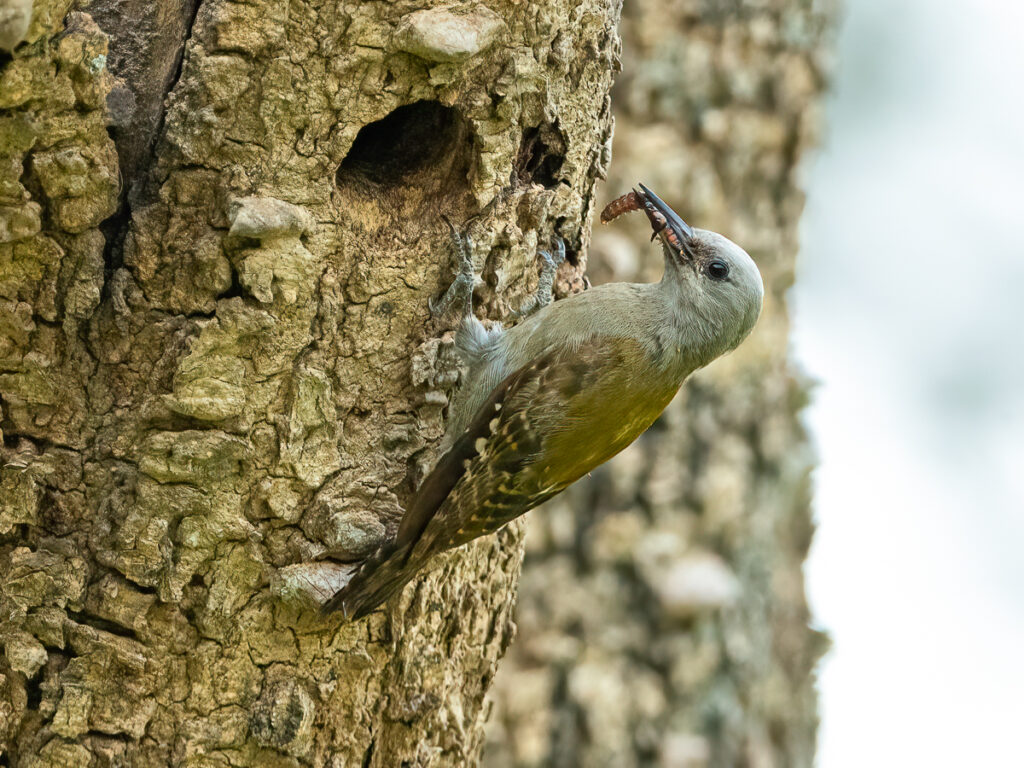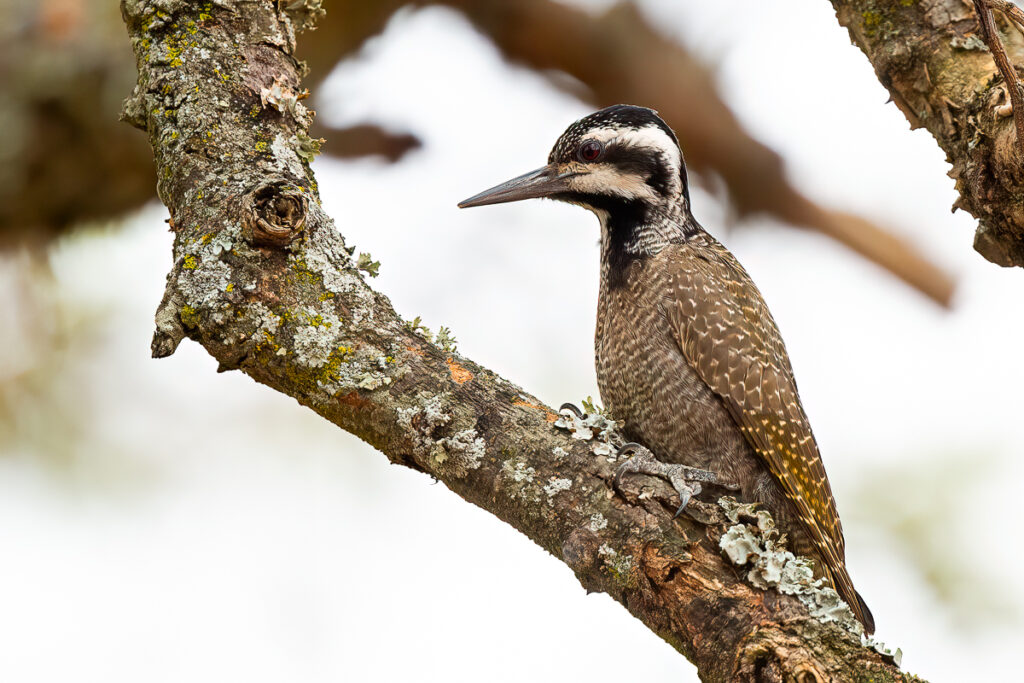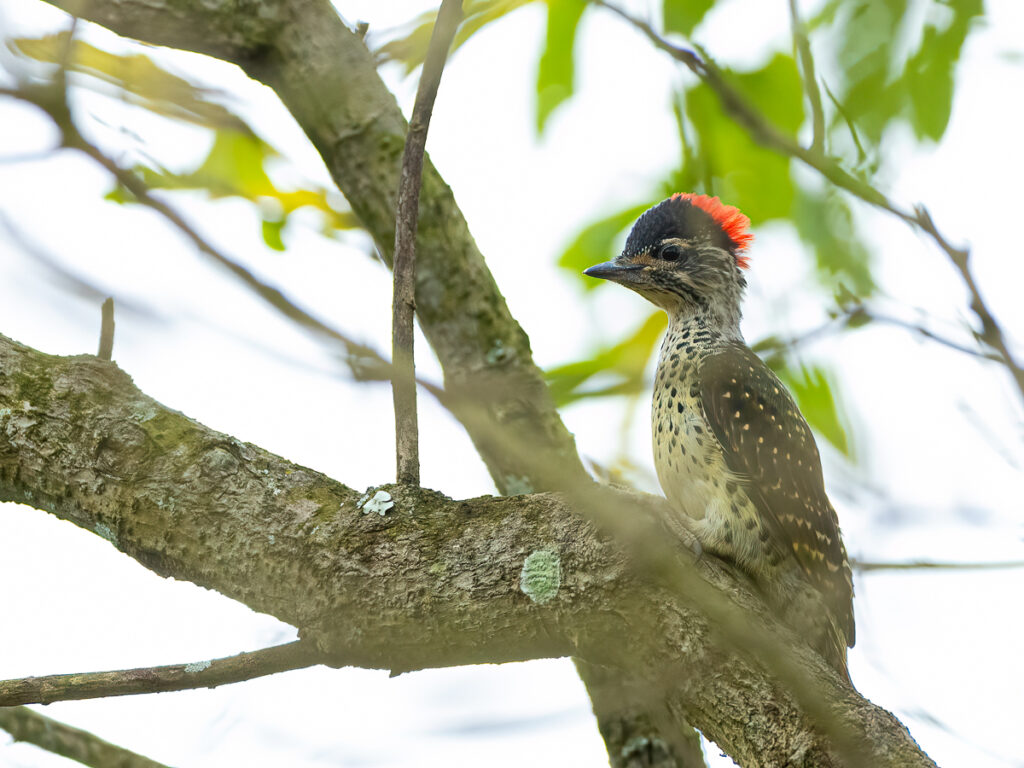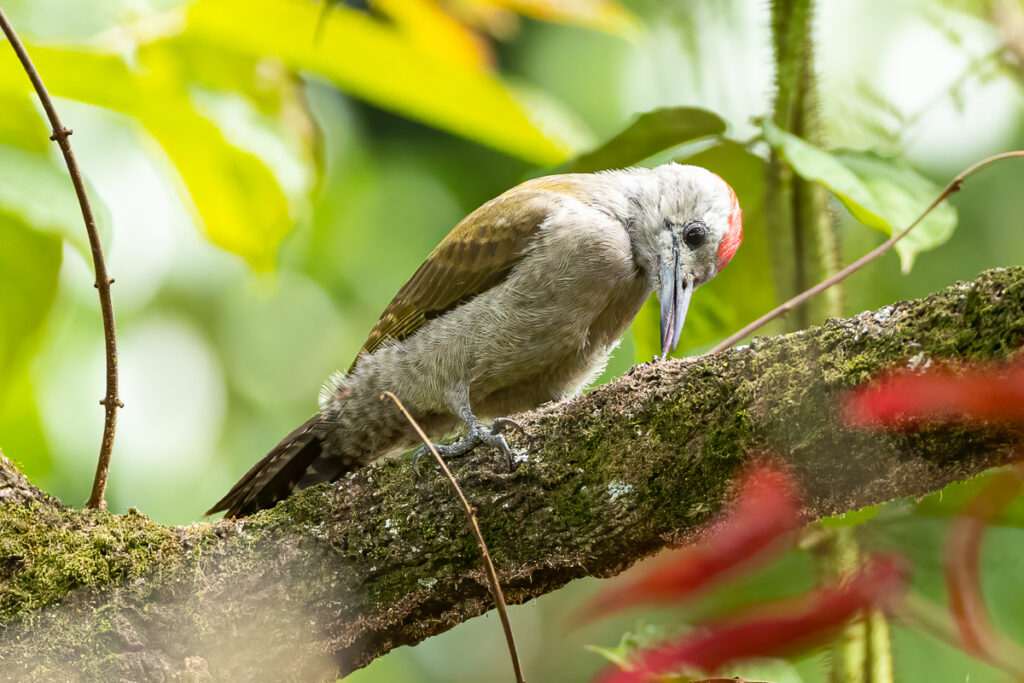Rwanda’s twelve woodpecker species have found homes in a variety of wooded habitats at differing elevations across the land of a thousand hills. From the montane rain forests in the west and north of the country through to the savannahs and woodlands in the east, and everywhere in between. The plumage of the woodpecker family (Picidae) involves various stripes, bands, spots, colours – and some even have flame-red crests. There is sexual dimorphism (physical differences between males and females) in all species, usually in the head plumage. Woodpeckers have short, rounded wings and an undulating flight pattern. So, nothing remarkable? Not so! Woodpeckers have a curious lifestyle for which they have some incredible adaptations.


Woodpeckers are probably best known for repeatedly hitting their beaks against hard surfaces, usually trees! And this is what they do for most of the day. How do they not get concussed by this behaviour? Well, their brains don’t weigh very much and are located at the back of the head, orientated to absorb impact from the front of the head. Moreover, their lower mandible (beak) is slightly longer than the top, so it strikes the wood first, transmitting the force through the jaw and not directly into the skull. Spongey bone at the base of the beak helps cushion the impact. They also always hammer their bills straight into the wood, the forces are therefore always in the same plane and aligned with that spongey bone. Why do they bash their beaks so much anyway? Well there’s a number of reasons… One reason is to locate wood-boring prey items hiding under tree bark. They also excavate their nest cavities this way. And it’s a method of communication, males will drum to attract females and to inform other males of the same species that this territory is taken. Each woodpecker species drums at a particular speed, unique to that species. Woodpeckers are not known for melodic vocalisations, and to be fair most of their calls are often described as sharp, agitated and ‘angry-sounding’.

Woodpeckers have also evolved a range of physiological adaptations which allow them to cling vertically to tree trunks and branches. They have zygodactyl toes, which means that they have two toes facing forward and two facing backwards. This allows them to form a wide grasp, gripping the bark from many different angles, woodpecker tail feathers (rectrices) have thickened shafts which are used as a prop, holding the body away from the tree. Their chisel-like beaks are also adapted to chip away at wood, enabling them to excavate nest cavities and find prey buried deep inside the tree. Most species have long and flexible necks which allows their head to swing in wide arcs, helping them to generate enough force to bash holes in the wood with the beak.

Woodpeckers also have impressively long tongues which wrap around the back of their skulls and have a barbed and sticky tip, as well as tiny muscles that allows a woodpecker to bend the tip of its tongue in any direction. This specialised tongue is critical for finding and manipulating prey items buried deep beneath the bark. Their diet consists largely of ants and other invertebrates found on or in trees, and occasionally caught in mid-air! When feeding, they generally start at the bottom of a tree or branch and work their way up before flying to the next. If they feel threatened they will either fly straight off or move around the branch, keeping it between them and the perceived threat.

Most woodpecker species are socially monogamous, roosting together in cavities or behind loose tree bark. Roosting hole entrances are usually larger than nesting sites, and whereas nest holes are only used once, roosting cavities are reused for long periods. By not reusing nest holes, they provide nest sites for lots of other cavity-adopting families of birds, such as some of the barbet family. Nest cavities are not lined with additional material apart from wood chips produced during excavation. Both sexes are active in nest construction, incubation and feeding the chicks. Males typically will incubate the eggs at night. Chicks hatch naked but will grow relatively quickly, fledging after three to four weeks in the nest, during which they are initially fed by the parents with regurgitated food and thereafter by solid prey which is passed from bill-to-bill. Some woodpecker species, like the Cardinal Woodpecker are targeted by brood-parasites, like the Scaly-throated Honeyguide.

Rwanda’s woodpeckers perform a really important role in their wooded habitats for other cavity-adopting wildlife and are great fun to watch foraging with their beaks. Don’t forget to listen out for their drumming or a flash of red flying past!


Excellent article.
Thank you Ricky, glad you enjoyed it!